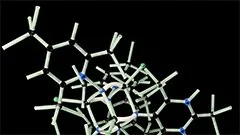Introduction
This comprehensive study delves into the complex and intricate world of cell junctions, which are integral to the functioning and survival of biological systems. Cell junctions serve as crucial interfaces that allow cells to communicate, coordinate their activities, and maintain tissue integrity. The study aims to provide a detailed and rigorous understanding of various types of cell junctions, their roles in maintaining tissue architecture and homeostasis, and their significance in cell signaling and developmental biology.
Understanding Cell Junctions
Cell junctions can be broadly classified into three main categories: adherens junctions, tight junctions, and gap junctions. Each type of junction plays a unique role in regulating intercellular interactions and maintaining tissue homeostasis.
Adherens Junctions
Adherens junctions are the most abundant type of cell junction and are primarily responsible for cell-to-cell adhesion. They consist of transmembrane proteins called cadherins and cytoplasmic proteins, such as catenins. The formation of adherens junctions involves a series of intricate molecular interactions that lead to the physical coupling of adjacent cells.
Cadherin-Catenin Complex
The formation of adherens junctions begins with the association of cadherin molecules on the plasma membrane of adjacent cells. This interaction triggers the recruitment of catenins, which bind to the cytoplasmic tail of cadherins and serve as scaffolds for the assembly of actin filaments.
Role in Cell Signaling and Regulation
Adherens junctions play a crucial role in cell signaling by modulating the activity of various intracellular signaling pathways. They also regulate cell migration, proliferation, and apoptosis. Furthermore, adherens junctions help maintain tissue architecture and prevent uncontrolled growth and migration of cells.
Tight Junctions
Tight junctions are specialized structures that form a seal between adjacent cells, preventing the passage of ions, solutes, and macromolecules. They are composed of transmembrane proteins, such as claudins and occludins, and cytoplasmic plaque proteins, like ZO-1 and ZO-2.
Structure and Function
The formation of tight junctions involves the alignment of adjacent cell membranes, followed by the assembly of transmembrane proteins into a continuous belt that seals the intercellular space. This barrier function is essential for maintaining tissue polarity, preventing the diffusion of solutes between cells, and regulating paracellular ion transport.
Role in Cell-Cell Communication
In addition to their role as a physical barrier, tight junctions also participate in cell-cell communication by modulating the transcellular movement of signaling molecules. This regulation is achieved through the interaction between tight junction proteins and various intracellular signaling pathways.
Gap Junctions
Gap junctions are specialized membrane channels that facilitate direct communication between adjacent cells via the passage of small molecules, such as ions and second messengers. They consist of connexin proteins, which form a hexameric structure called a connexon in each cell membrane.
Formation and Function
The formation of gap junctions begins with the alignment of connexons from adjacent cells, followed by their docking and fusion to create an intercellular channel. This communication pathway allows for rapid exchange of information between neighboring cells and coordinated responses to external stimuli.
Role in Development and Disease
Gap junctions play a critical role in embryonic development, tissue homeostasis, and wound healing. Dysregulation of gap junction function has been implicated in various pathological conditions, including cardiac arrhythmias, neurological disorders, and cancer.
Conclusion
The study of cell junctions provides valuable insights into the complex mechanisms that underlie intercellular communication, tissue organization, and homeostasis. Understanding these processes is essential for developing targeted therapies for a wide range of diseases that affect tissue integrity and function. This comprehensive analysis offers a systematic exploration of adherens junctions, tight junctions, and gap junctions, highlighting their unique roles in maintaining tissue architecture, regulating cell signaling, and orchestrating developmental processes.
MCQ: Test your knowledge!
Do you think you know everything about this course? Don't fall into the traps, train with MCQs! eBiologie has hundreds of questions to help you master this subject.
These courses might interest you
Create a free account to receive courses, MCQs, and advice to succeed in your studies!
eBiologie offers several eBooks containing MCQ series (5 booklets available free for each subscriber).



